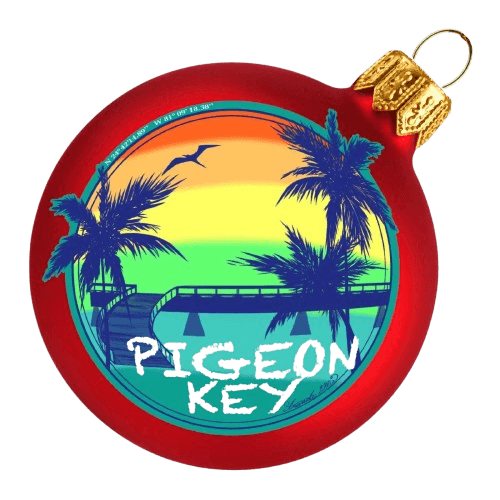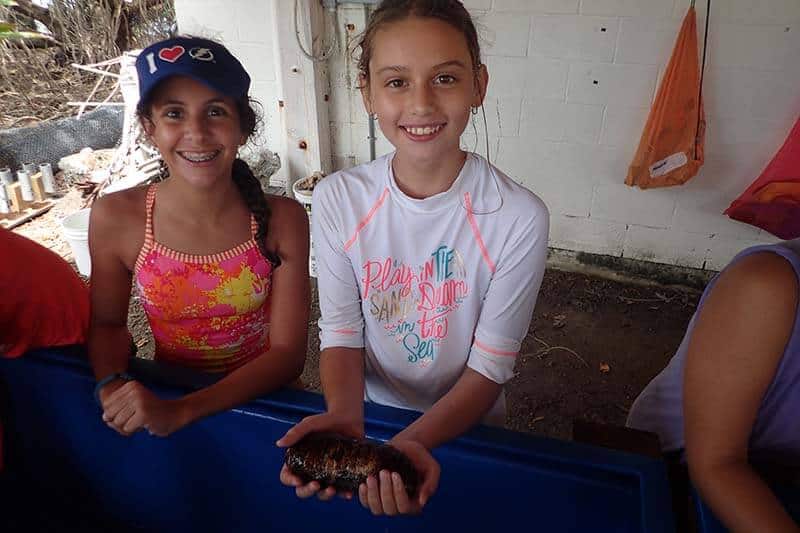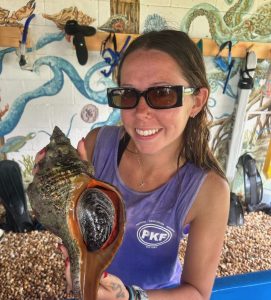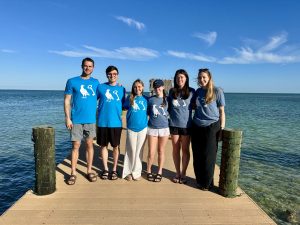The five-toothed sea cucumber (Actinopyga agassizi) is a lesser known species of invertebrate that belongs to the phylum Echinodermata, which includes sea stars and sea urchins. As with all echinoderms, sea cucumbers move along the ocean floor using tube feet. These small tube feet are connected to the water vascular system, a series of channels that use pressurized water to transport waste and nutrients throughout the body of the animal, as well as allow them to move. These animals are important for the marine ecosystem in which they are found because they feed on detritus, meaning they help breakdown excess organic material that settles to the bottom of the ocean. The five-toothed sea cucumber is a nocturnal animal and is typically found under rocks during the day here around Pigeon Key. This species of sea cucumber is generally a light brown or tan with spots of dark brown and can be anywhere from one to 18 inches long in our waters.
Given that sea cucumbers are extremely vulnerable to predators, they have evolved various defense mechanisms. When the sea cucumber initially feels in danger, it will shoot a stream of water from its anus. This water contains a chemical called holothurin, which is a toxin that is lethal to many marine animals. If that is not enough to deter the predator, the animal will eviscerate, or expel their respiratory tree into the water. The organs are sticky and will entangle and restrain any predator that may approach too close to the sea cucumber. While this is extremely stressful on the animal and only used as a last resort, echinoderms can regenerate parts of their bodies and so the respiratory tree will regrow within a few days. The five-toothed sea cucumber utilizes both defense mechanisms but also is unique in that it has evolved a defense in response to a specific predator. The pearlfish is a small elongated fish that will swim up the anus of a sea cucumber and live as a parasite inside the invertebrate, eating its internal organs. In defense, the anus of the five-toothed sea cucumber has a ring of five small teeth that keep the pearlfish from entering the body cavity.
The five-toothed sea cucumber is just one of the many species of invertebrates we find in the waters surrounding Pigeon Key. Students who come to our Marine Science Center have the opportunity to first learn about these unique animals during our Invertebrate Biodiversity program and then get in the water for an invertebrate collection via snorkeling and tide pooling. They then are able to participate in a touch tank session, holding and appreciating all they collected. Educating people about the important roles marine invertebrates play in our oceans is an essential first step in protecting these animals. Sea cucumbers have begun to be harvested in large numbers all over the globe due to the demand for them in many Asian counties, including Japan and China. In these cultures, sea cucumbers are thought to have many health benefits when eaten and thus are a popular dish. In 2013, roughly 60,000 sea cucumbers were collected from the Key West area alone and this prompted concerns about the over-harvesting of the animals. In response, Florida, specifically the Keys, have recently put regulations in place on the number of sea cucumbers that can be harvested. As of June 1, 2014, each vessel is only allowed to collect 200 sea cucumbers a day in hopes that the population can be maintained.




